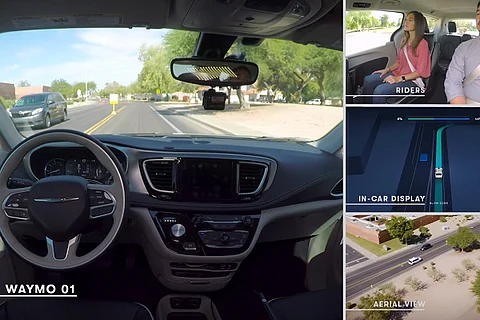

Alphabet’s self-driving unit Waymo is set to make driverless cars a reality as it launches a ride-hailing service without a human. According to a report by Associated Press, Waymo is now testing vehicles on public roads in Arizona with only an employee in the back seat.
While the Waymo employee in the back seat won't be able to steer the vehicle, they will be able to press a button in case the technology fails or if the vehicle needs to be safely stopped. This button will also be accessible to all passengers.
Waymo is the first of many companies attempting the driverless technology to begin full-fledged testing on the roads. The others in the race are Delphi, General Motors, Intel, Uber, Apple and Lyft.
A Reuters report quotes Waymo as saying that the public will begin riding in its fleet of Fiat Chrysler Pacifica minivans without human drivers in a test run in the next few months in a few areas of Phoenix, Arizona in the US. Waymo has chosen Arizona because it has dry, predictable weather. Developers are still in the process of figuring out with vehicle performance in snow or heavy rain.
Waymo has a fleet of 100 autonomous vans in Phoenix, with plans to add 500.
When Waymo CEO John Krafcik made the announcement in Portugal, he said that the company will be expanding the testing eventually to more cities around the world.
``To have a vehicle on public roads without a person at the wheel, we've built some unique safety features into this minivan. Our system runs thousands of checks on itself every second. With these checks, our systems can instantly diagnose any problems and pull over or come to a safe stop if needed,'' he added.
Waymo’s autonomous vehicles also have redundant braking, steering, power and computing systems to reduce any need to rely on a human driver.
And while the cars make the driving decisions, an operations team can answer questions from the car’s computers.